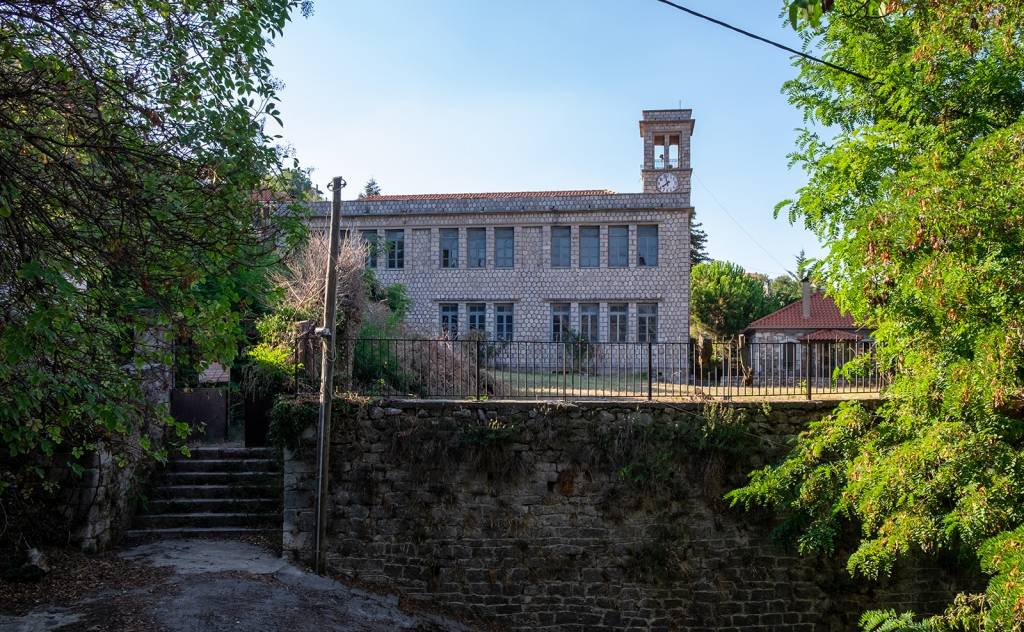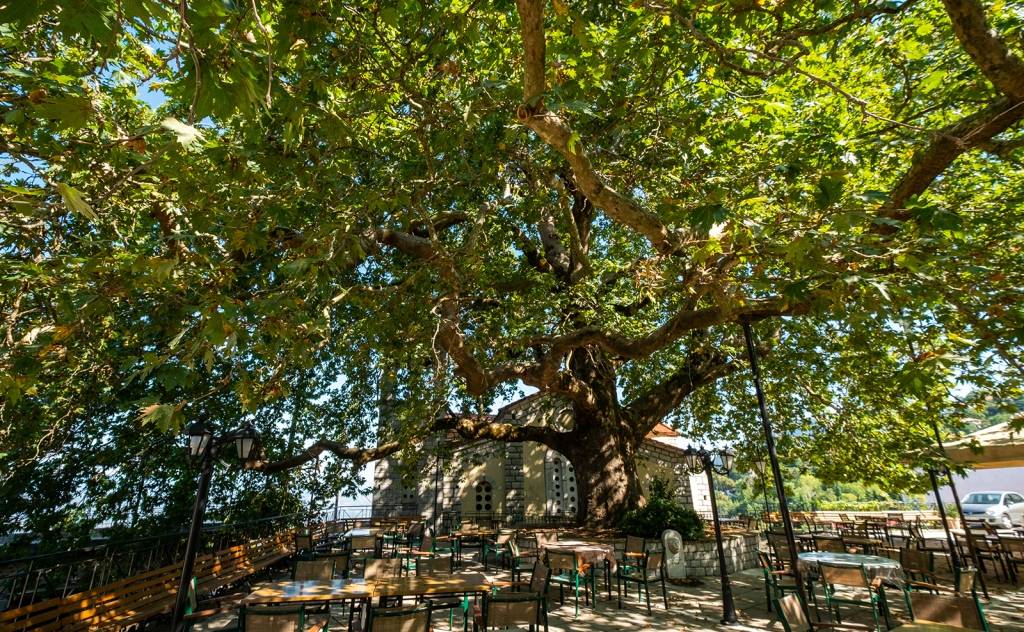






Georgitsi is a mountain village on the northeast side of Taygetos, built amphitheatrically at an altitude of 970 metres. Higher than the last houses of the village, there is a dense forest of chestnut trees and a forest of firs and black pines at a higher altitude. It is just 29 km from Sparta and is known as the "Balcony of Taygetos". It is said, in fact, that this name was given by King George I when he first saw the place. The village probably took its name from historian and scholar George Plethonas or Gemistos, who had settled in the area after the invitation of the Palaeologus family. A second version says that the village was named after Lord Georgitsis, to whom the site was handed over as a reward for his services to the homeland during the colonial system of "Pronoies" (according to which land was given as a prize). In the 16th century, Georgitsi was probably the largest village in Laconia, after Mystras. Documents from Venice state that in 1699 the Venetians imposed a fine of 6,687 Venetian pounds to Georgitsi because its inhabitants refused to go and offer their help to the fortification works of the Isthmus of Corinth.
At Georgitsi, visitors can wander along the narrow alleys with traditional houses "scattered" in the various neighbourhoods. The characteristic of these houses is that they were built to be used as fortresses (to deal with Turkish raids). This, at least, is evidenced by the ten to fifteen war holes that exist in each. It is no coincidence, of course, that the Turks never conquered the village. During the Revolution of 1821, for a time, Theodoros Kolokotronis left his mother, Zambia, at Georgitsi for greater security.
When you are at Georgitsi, you should visit the Primary School, which is located in the centre of the village and has been designated a historical monument. It replaced the old school (built in 1851), from which only some walls survive. The construction of the new school took place during the years 1925-1933 at the expense of the Educational Association of Georgitsians, "Socrates", which is an association based in America. It is, in fact, a jewel of rare architecture. The school is a stone building (made of stones brought from Taygetos) in a C-shape with two courtyards (one for boys and one for girls). The architect was Anastasios Metaxas (1862-1937), who also implemented the plans for the renovation of the Kallimarmaro Panathinaikos Stadium. This beautiful building, in the past, was also used as a school, a court of justice and the rural doctor's office.
In the upper neighbourhood of the village, the visitor can see the Monument of Heroes of the Airmen who sacrificed for their country, while in the lower square, the unmarked monument of the fallen for the period 1912-1922 and the Second World War stands. At the village entrance, there is the F104 fighter jet, as a token of appreciation by the General Staff of the Hellenic Air Force to the Patriots of the Fallen Airmen. Every year, a celebration takes place on the Taxiarches celebration (November 8th) in their honour. Georgitsi also stands out for its numerous fountains, each with its own name, such as Tsagarovrisi, Skrobelou Fountain, Krya Vrysi, Haha Fountain, Paraschis Fountain, Agia Mavra Fountain, etc.
Finally, every year, at the end of October, the Tsipouro Festival is organised at Georgitsi. The celebration takes place at the village entrance, at the Karvounorema location, with the tall plane trees and the homonymous fountain. On this day, tsipouro is plentiful and is accompanied by appetisers and bean soup, while a traditional feast with folk music follows.